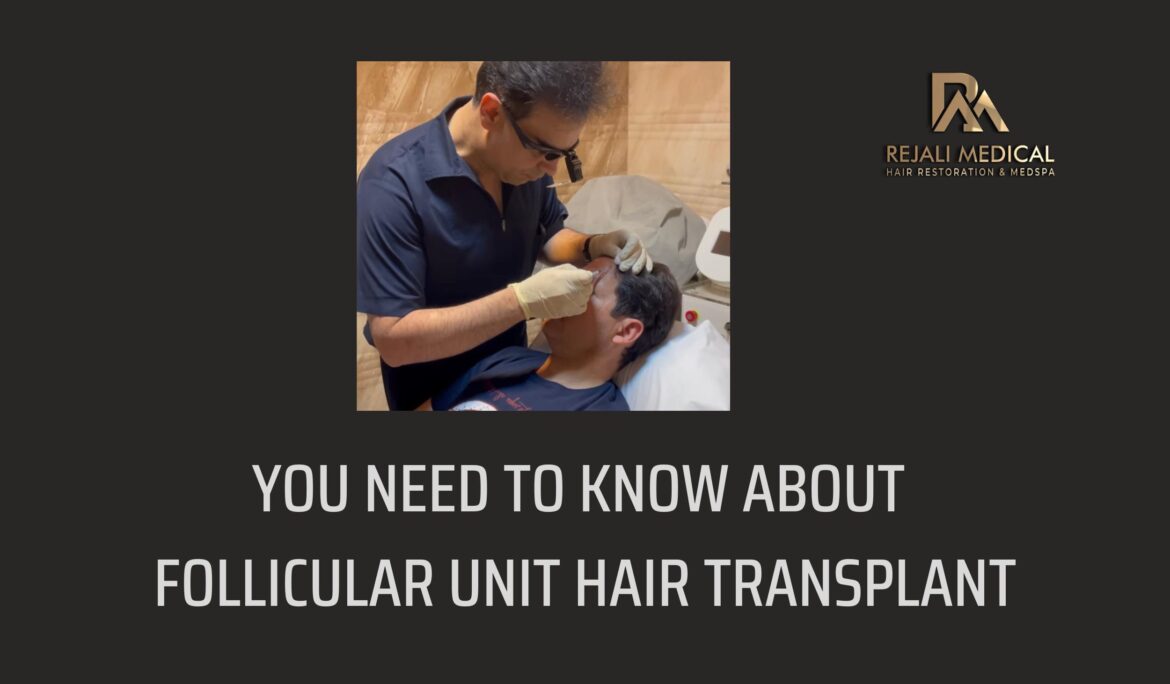Hair transplant techniques have evolved significantly over the years. At the forefront of this evolution is the method known as Follicular Unit Extraction or FUE hair transplant. If you’ve found yourself considering this procedure, it’s essential to understand the intricacies, benefits, and potential risks.
Understanding FUE Hair Transplant
Follicular Unit Extraction, commonly known as FUE hair transplant, involves the meticulous extraction of individual hair follicles from one part of your body to implant them into areas exhibiting thinning or baldness. By redistributing these follicles, a thicker, more uniform hair appearance is achieved.
The origin of FUE dates to its precursor: the follicular unit transplantation (FUT) technique. FUT involves the excision of an entire skin strip, inclusive of the hair follicles, then dissecting this strip under the microscope and finally implanting in areas which needs hair restoration. However, this method was prone to leaving a linear scar, leading to the need for a less invasive procedure named as FUE. With the ability to provide a more natural look without the dreaded “hair plug” appearance or significant scarring, it’s no wonder that FUE quickly overtook FUT in popularity.
Also, FUE has been evolved during these years significantly, it initially started with old manual punches and then punches working with motorized devices. Every day was more progress in field of FUE, but Dr.Rejali does not use any full automated device because the size punch of this automated devices is larger and the doctor has less control over gathering grafts. Instead, he uses latest hybrid punch technique that are small size punches to help him in being sophisticated and getting best possible grafts.
These new technologies help improve the process of hair transplant, but the most important factors required in order to get the best possible results are the expertise and skills of the physician performing the procedure,
Over the past two decades, Dr. Rejali has done thousands of hair restoration procedures and he is always motivated to explore new technologies and implement improved methods in his practice
However, it’s essential to recognize that not everyone is an ideal candidate for this procedure. Those best suited for an FUE hair transplant are individuals witnessing thinning or balding but with sufficient hair in donor areas viable for transplantation.
The FUE Process
Hair loss is a universal concern, but the onset and extent vary amongst individuals. As age progresses, the natural cycle of hair growth may wane, resulting in follicles losing their ability to regrow hair. An FUE hair transplant seeks to combat this by introducing healthy follicles into regions that have ceased to produce hair.
The procedural steps for an FUE transplant include:
- Preparation: The doctor first shaves the donor area .
- Extraction: With precision, a micro punch tool is employed to extract individual hair follicles.
- Incisions: The doctor then makes small incisions in the recipient area.
- Implantation: Extracted follicles are carefully placed into these incisions.
- Post-surgery care: The operated area is cleaned, and bandages are applied.
Although the scalp remains the primary recipient area, FUE is versatile. It can address hair thinning issues on beard, mustache, or eyebrows.
Are there any risks with FUE Hair Transplant?
FUE is a minimally invasive procedure so the risks and complications
in hands of experienced physician are minimal, temporary swelling, itching and a little numbness in treated area are some of its complications which some people experience and usually will resolve quickly.
The Post-Transplant Journey
Recovery post-FUE is generally swift, with minor swelling or discomfort lingering for about three to five days. To ensure optimal results:
- Refrain from washing the hair for 1-2 days
- Employ mild, unscented shampoos when you resume hair washing.
- Avoid touching the new hair for at least 10 days
- Steer clear of strenuous activities for a week.
It’s not uncommon for some transplanted hair to shed during the healing process. However, noticeable improvements typically manifest between 3 to 4 months post-FUE
If you’re looking for a reliable hair transplant procedure in AZ Dr.Rejali hair restoration can be a helpful choice. With decades of experience and supervision by Dr. Seyed Farhad Rejali a diplomate of American board of hair society with two decades experience and thousands of hair restoration procedures done you’ll rest assured you’re in good hands.
Please Visit www.rejalimedical,com for more information or call Dr.Rejali’s office to book a free consultation











